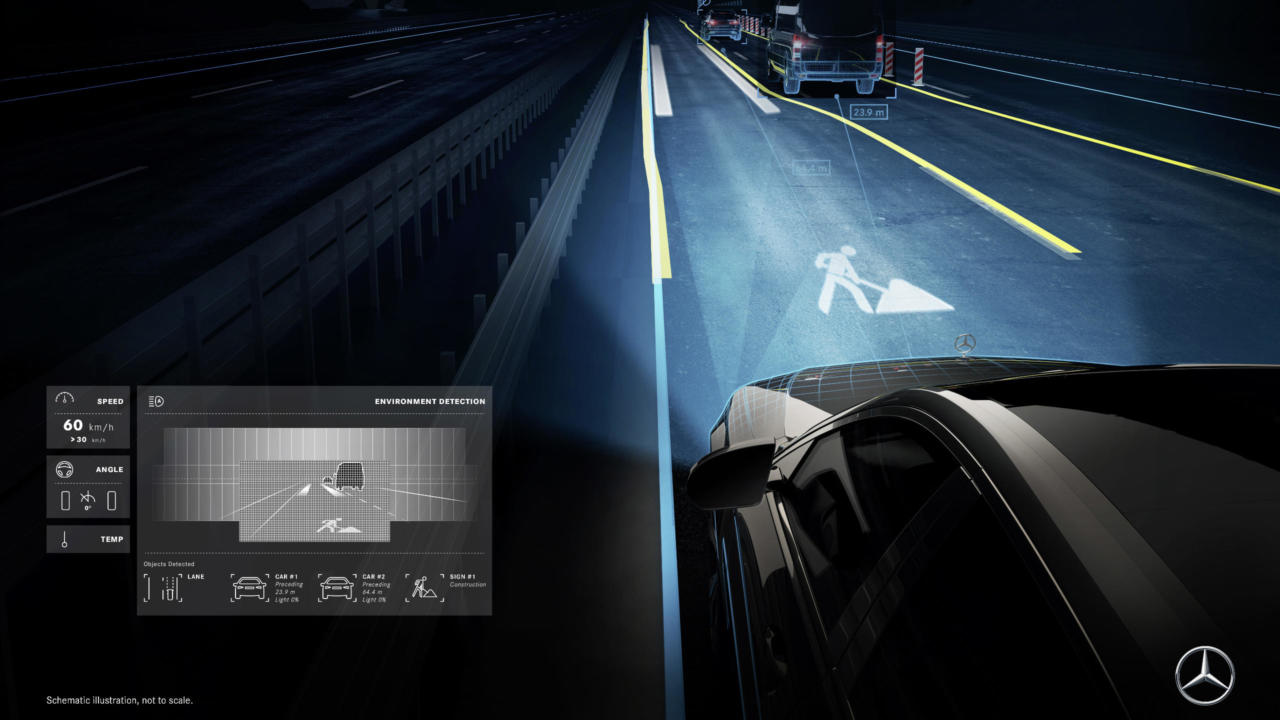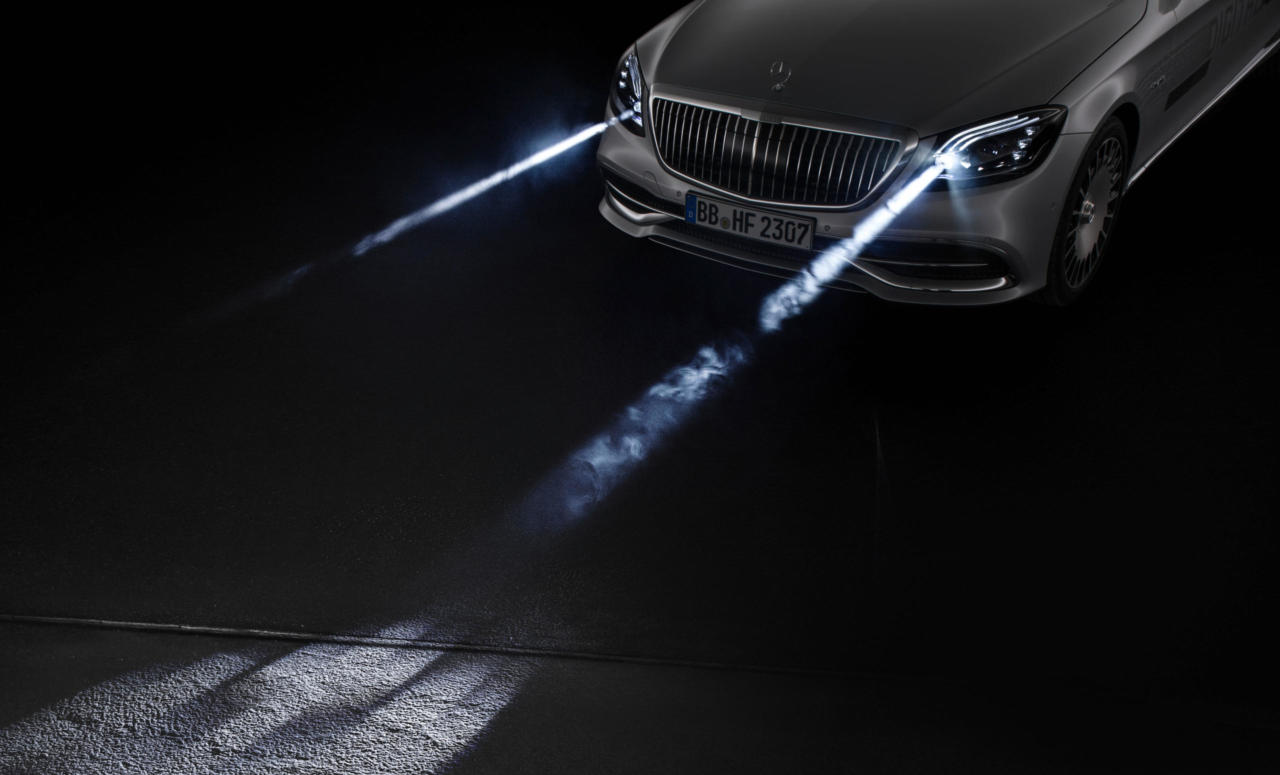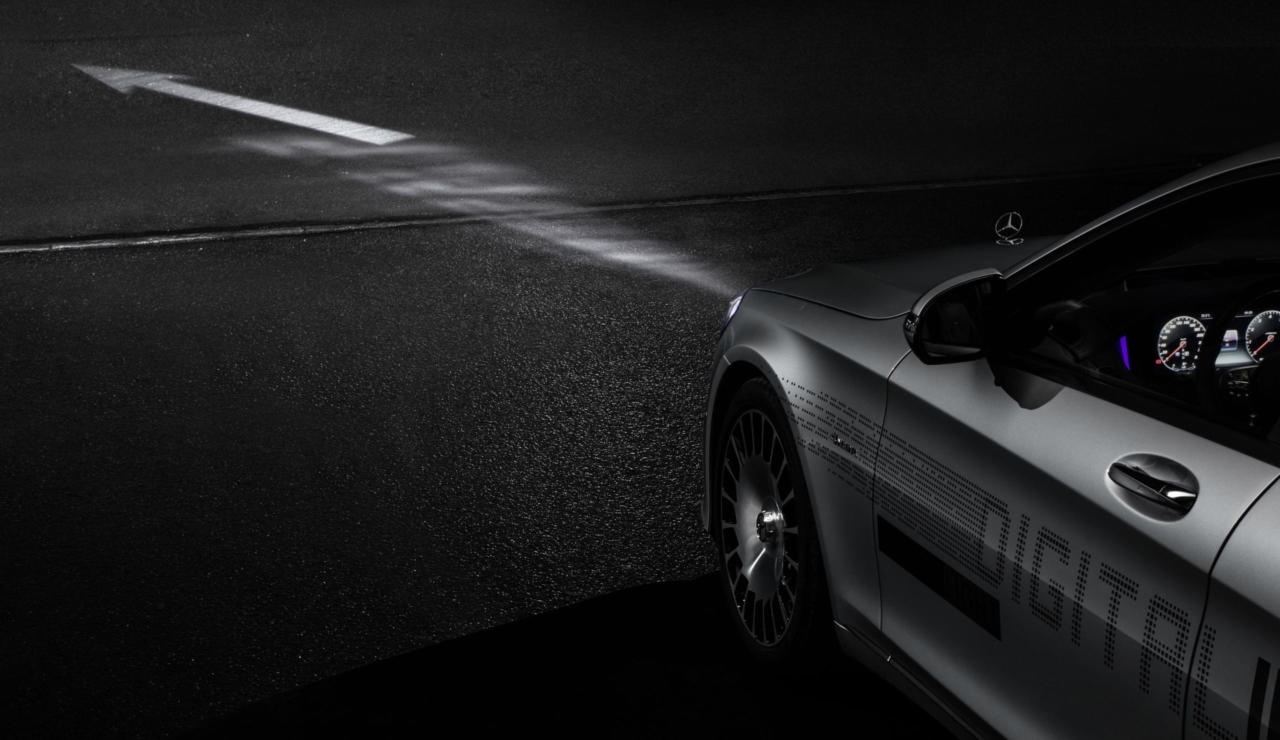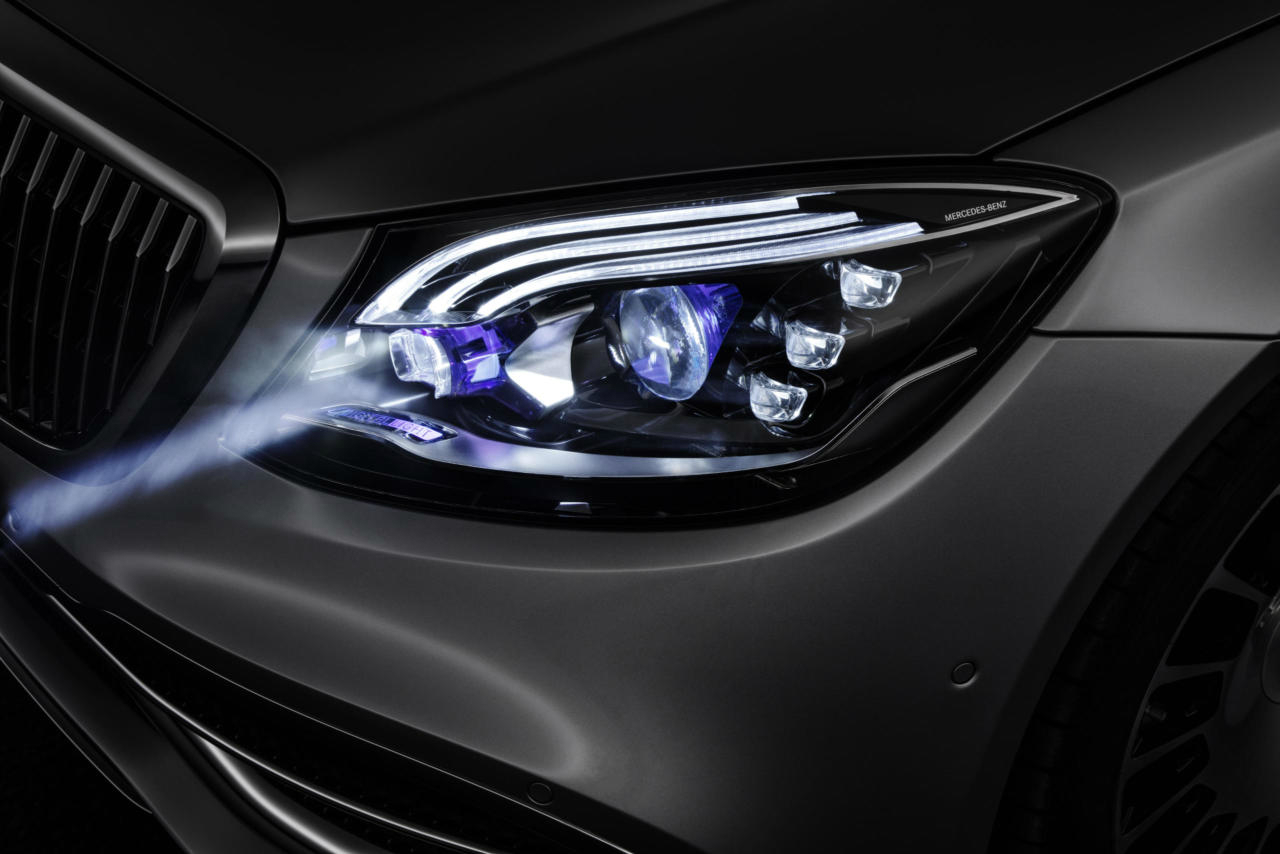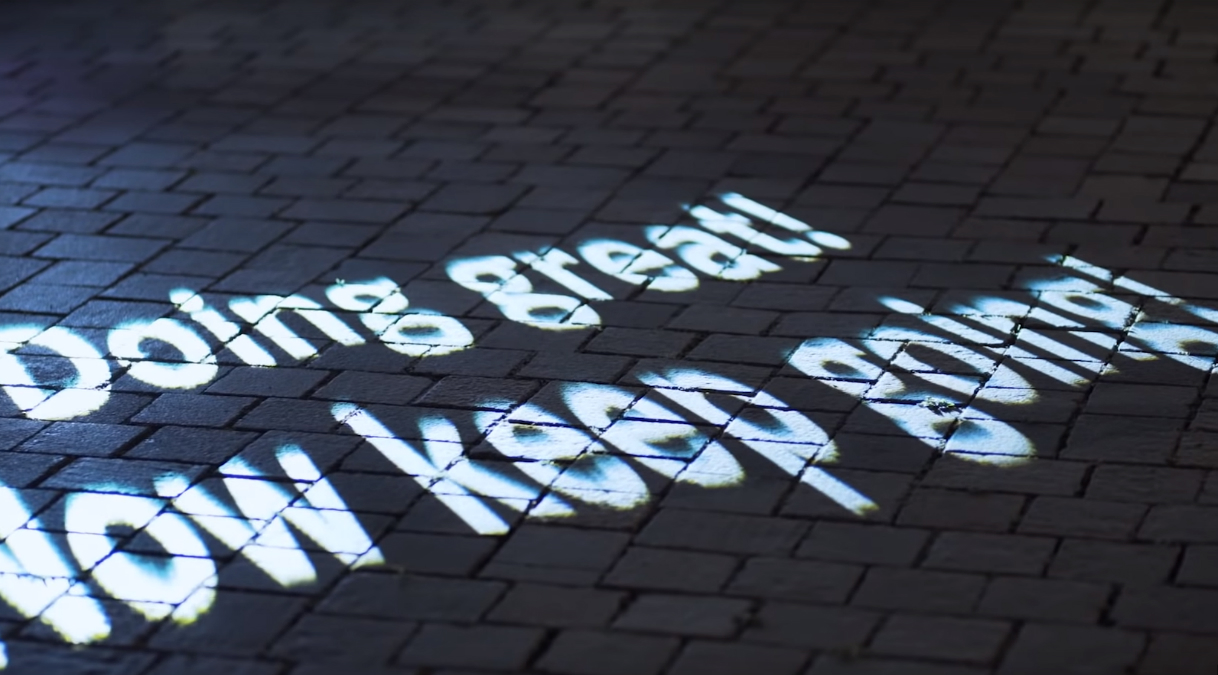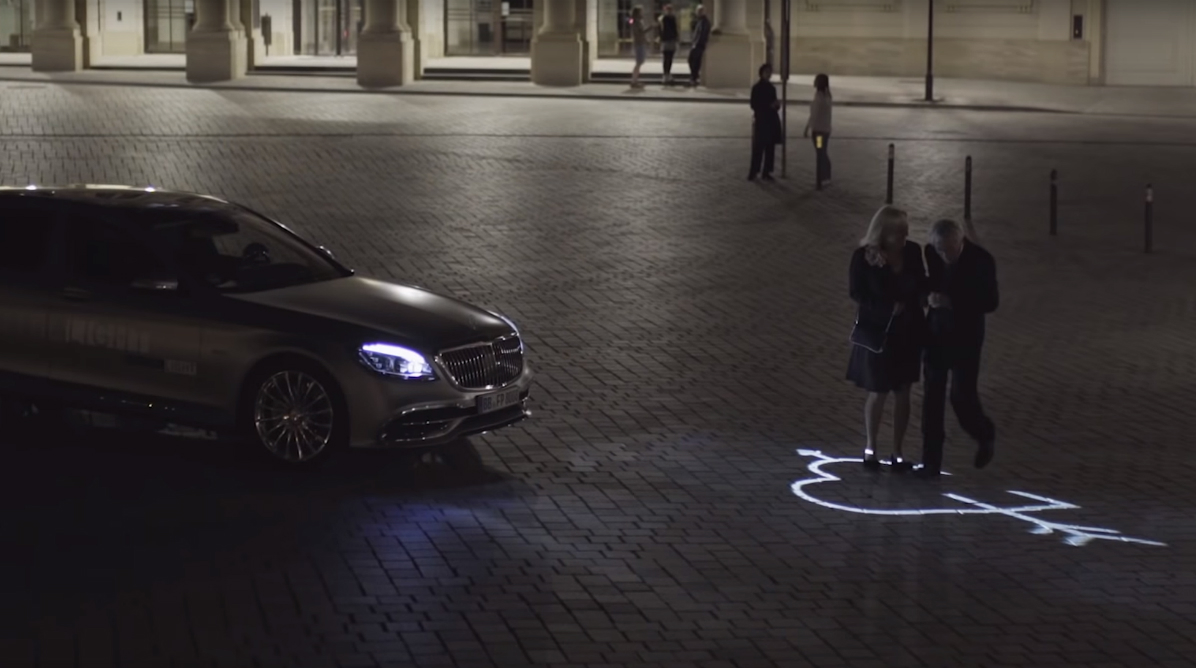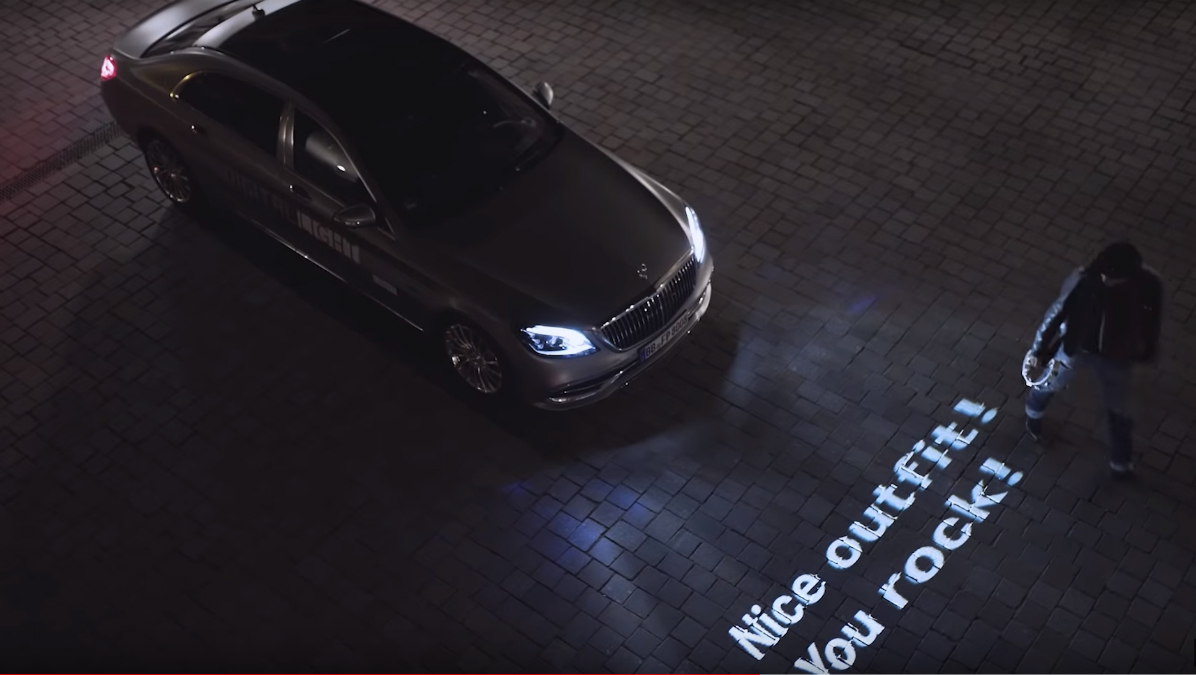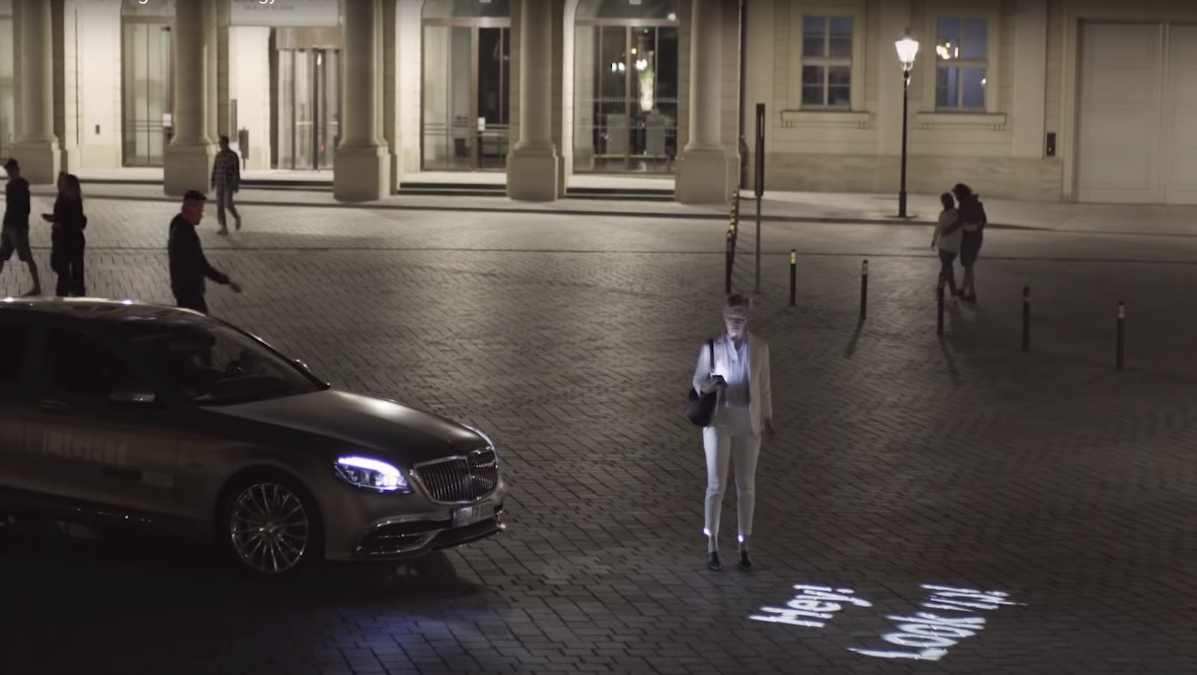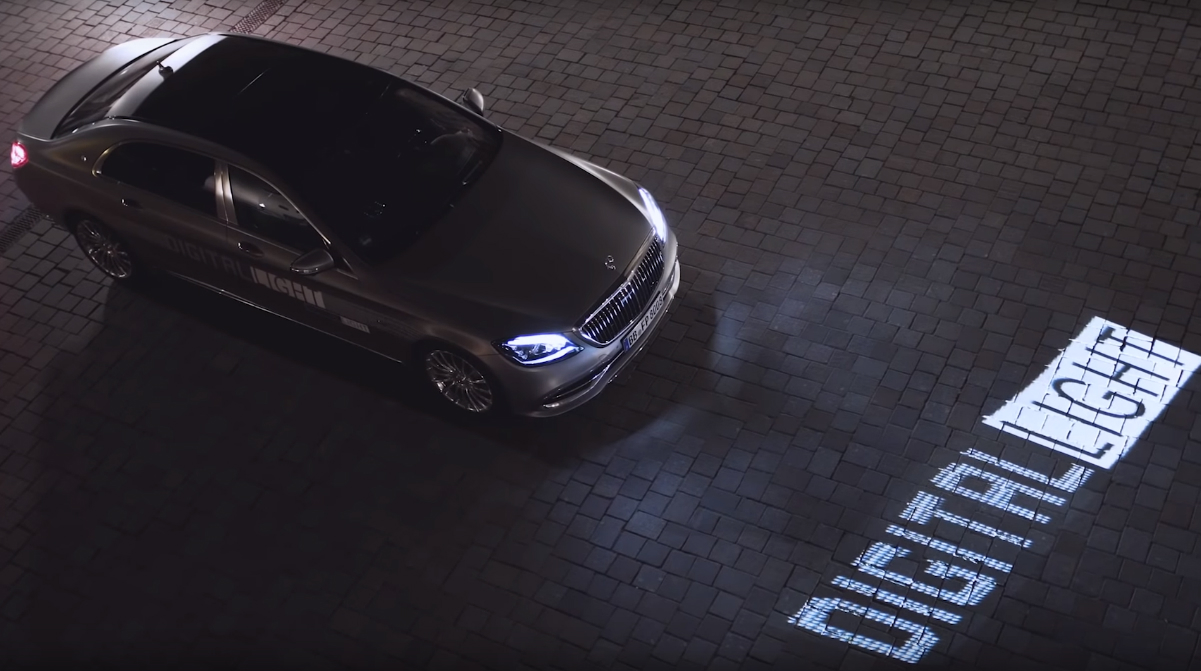With more than one million micromirrors per headlight, Mercedes-Benz Digital Light HD headlights do much more than just illuminate the highway.
Drivers can project messages on the road in front of a car equipped with the new headlights. The lights can also project navigation guides and road conditions or traffic warning symbols.
Digital Light onboard computers control the HD headlights, which are available in limited quantity for Mercedes-Maybach S-Class sedans. The car shown in the images and video that accompany this article is the Mercedes-Maybach S 560 4Matic, which has a $168,600 U.S. starting list price.
Like most auto manufacturers, Mercedes-Benz introduces new features first in top-of-the-line models for two reasons: exclusivity and scale. Customers who buy the most expensive models are rewarded with a feature most vehicles won’t include for years, perhaps even a decade or more. Also, because the top-model customers are already paying big bucks, they are more likely to spend the extra money new features cost before economies of scale bring prices down.
“With a resolution of over one million pixels per headlamp, DIGITAL LIGHT not only creates ideal light conditions for every driving situation; it also extends the visual support from our driving assistance systems,” says Ola Källenius, member of the board of management of Daimler AG and responsible for Group Research and Mercedes-Benz Cars Development.
Unlike multibeam LED headlights, which though extremely bright can dazzle oncoming drives, the HD headlights have greater precision in light placement.
The Digital Light computers that control the lights work in concert with the vehicle’s cameras and onboard sensors to detect other vehicles, people, or objects on the road. The sensor data combines with the car’s digital navigation maps.
If appropriate, the Digital Light system projects symbols ahead of the vehicle in HD quality, displaying the graphical information in the driver’s field of vision without requiring so much as a glance at the dashboard.
On request, the lights project guideline — two light trails equal to the car’s width. If a pedestrian is on or near the roadway, an arrow points to their location. Used with the car’s Distronic Plus cruise control distance feature, the Digital Light feature projects the distance mark.
Additional projected Digital Light graphic warning indicators include symbols or signs for low-grip road surfaces, construction sites, and an impending rear-end collision. Driver assist graphics include lane-keeping, blind-spot, and speed limit symbols and signs.
Editors' Recommendations
- Mercedes G580 electrifies an off-road icon
- 2025 Mercedes-Benz EQS sedan gets new face, bigger battery
- Mercedes’ electric eSprinter isn’t just greener, it’s better
- How do you crash-test an EV with an 871-pound battery? Mercedes showed us
- Mercedes ‘Little G’ electric G-Wagon: Rumored design, release date
